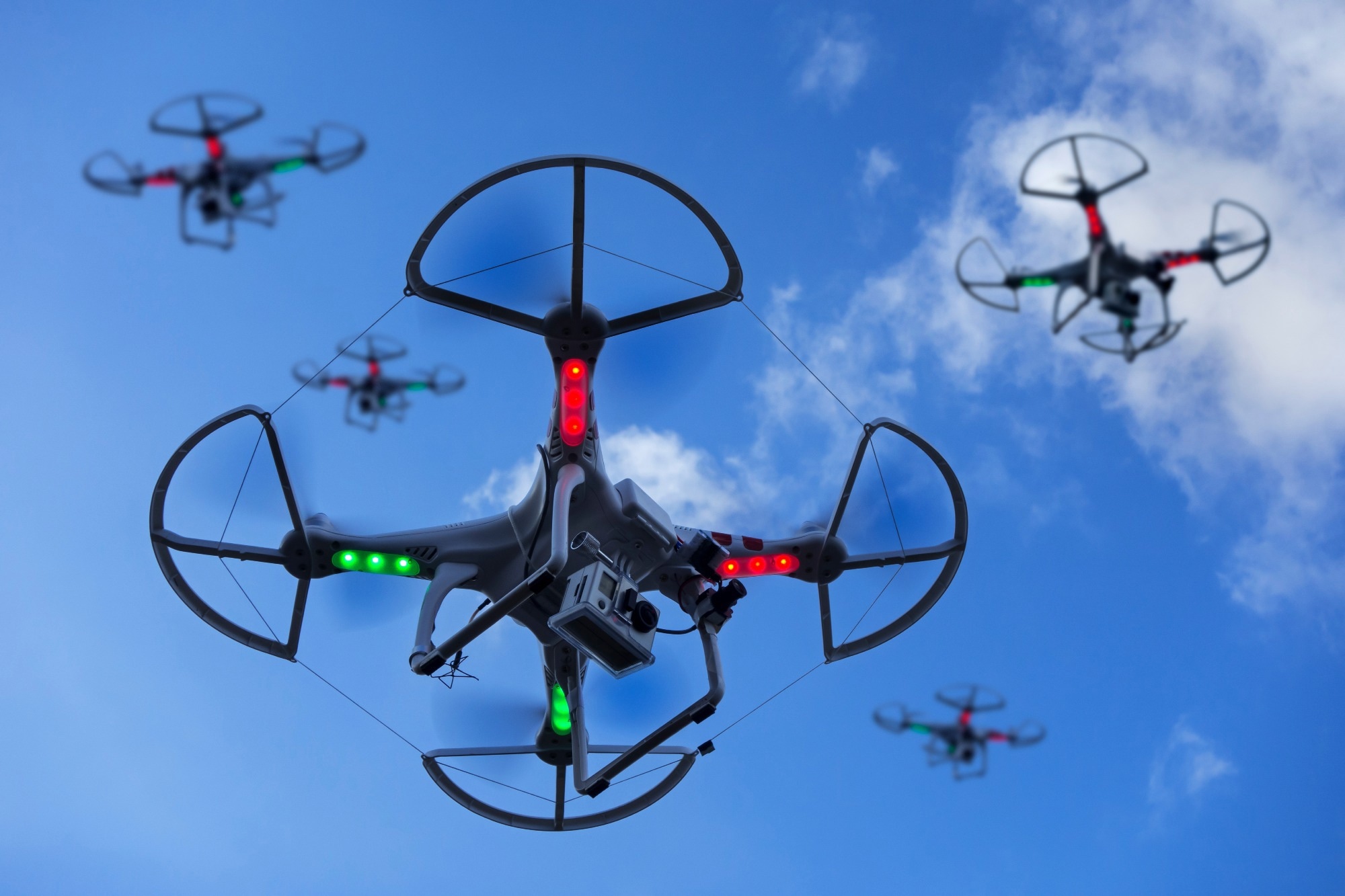A recent study published in Nature Communications by researchers from China introduces innovative, flexible calorimetric flow (FCF) sensor designs that aim to outperform traditional sensors.
 Study: Flexible Calorimetric Flow Sensors for MAV Flight Control. Image Credit: Philippe Clement/Shutterstock.com
Study: Flexible Calorimetric Flow Sensors for MAV Flight Control. Image Credit: Philippe Clement/Shutterstock.com
Micro air vehicles (MAVs) are essential in numerous applications, requiring precise measurement of flight parameters, particularly airflow characteristics. Traditional sensors in MAVs often fall short in sensitivity and directional resolution, limiting the effectiveness of flight controls and overall stability. In response, researchers have developed advanced sensor designs, notably the flexible calorimetric flow (FCF) sensor, which is detailed in this study.
Background
Airflow sensors currently used in MAVs face challenges with sensitivity and directional accuracy, which hampers the efficiency and maneuverability of these aerial vehicles. In response, the pursuit of improved sensor technologies has led to the exploration of innovative designs aimed at enhancing performance.
By leveraging advanced materials and microfabrication techniques, researchers are working to develop sensors that offer greater sensitivity, better directionality, and the ability to sense multiple parameters simultaneously.
The Current Study
In this study, researchers developed a new type of calorimetric flow sensor that's slim, flexible, and highly responsive, making it ideal for use in MAVs. They crafted this sensor by applying a thin layer of vanadium oxide (VOx) onto polyimide (PI) substrates through reactive ion beam sputtering, followed by annealing in an argon environment. The sensor, built with layers of epoxy, copper-on-PI, and PI, includes intricately patterned heaters, electrodes, and VOx thermistors.
To assess the sensor's ability to measure temperature variations and airflow direction, the team used computational fluid dynamics (CFD) simulations, utilizing ANSYS2020-R2 software. Wind tunnel experiments further characterized the sensor's performance.
Additionally, the study explored the use of MLP neural networks to interpret data from the flow sensor, successfully estimating critical flight parameters like the angle of sideslip (AOS), angle of attack (AOA), and flight velocity. The accuracy of these estimates was confirmed through tests with both indoor and outdoor flight datasets, enhancing the sensor’s practical application in real-world conditions.
Applications
The utility of the FCF sensor exceeds that of typical airflow sensors, offering a wide range of applications that are crucial for MAVs. It not only measures three-dimensional flight velocities but also monitors wing vibrations, opening new possibilities for improving flight stability and control. Its compact and flexible design makes it perfect for small MAVs where size and weight are critical considerations. Additionally, its low power needs and high sensitivity make it ideal for real-time monitoring and control during dynamic flight situations.
This study marks a significant step forward with the creation of a versatile sensor that can handle multiple sensing tasks with remarkable accuracy. The FCF sensor stands out as a key advancement in enhancing MAVs’ capabilities, providing better attitude detection, airspeed measurement, and safety monitoring. Its improved sensitivity and ability to detect direction make it an essential tool for upgrading flight control systems, boosting the overall performance of MAVs in various operational settings.
Results and Discussion
The utilization of the FCF sensor in MAV applications yielded promising results, demonstrating exceptional sensitivity and directionality in airflow detection. The sensor's capacity to accurately assess various flight parameters, such as attitude angle, relative airflow velocity, and wing vibration monitoring, highlights its effectiveness in improving flight control systems. Additionally, the sensor's rapid response time and high resolution enable the detection of subtle high-frequency airflow variations, offering valuable insights into MAV wing vibrations and aerodynamic behavior.
The outcomes derived from the FCF sensor experiments underscore its potential to transform airflow sensing in MAVs. The sensor's unique design, incorporating a VOx thermistor array on a flexible substrate, contributes to its remarkable sensitivity and repeatability, crucial for precise airflow measurement. The directional accuracy of the sensor, characterized by changes in airflow angle θ, demonstrates its ability to precisely capture velocity components through orthogonal decomposition using paired thermistors. This directional precision is essential for MAVs operating in dynamic environments, where accurate airflow monitoring is critical for stable flight control.
Furthermore, the outdoor flight tests conducted to estimate relative airflow velocities further validate the FCF sensor's precision and reliability in discerning airflow variations during MAV flight maneuvers. The sensor's performance during fast-reciprocating flights along different axes and flight modes underscores its versatility and robustness in real-world flight scenarios. These findings show a significant advancement in MAV sensor technology, opening avenues for enhanced flight control, stability, and performance across diverse operational contexts.
Conclusion
To conclude, the innovative calorimetric flow sensor introduced in this investigation marks a notable progression in airflow sensing technology tailored for MAVs. By fusing elevated sensitivity, directionality, and multi-parameter sensing functionalities in a singular apparatus, the sensor provides a pragmatic avenue for elevating flight control precision and stability.
The study outcomes establish a solid foundation for forthcoming strides in sensor innovation and assimilation, with prospective implications across varied domains necessitating meticulous airflow supervision and regulation. In essence, the FCF sensor harbors substantial potential for amplifying the operational prowess and functionalities of MAVs within intricate operational milieus.
Journal Reference
Zheng Gong, Weicheng Di, Yonggang Jiang, et al. Flexible calorimetric flow sensor with unprecedented sensitivity and directional resolution for multiple flight parameter detection. Nature Communications 15, 3091 (2024). https://doi.org/10.1038/s41467-024-47284-7, https://www.nature.com/articles/s41467-024-47284-7